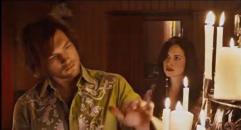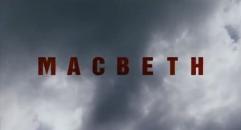AustLit
The material on this page is available to AustLit subscribers. If you are a subscriber or are from a subscribing organisation, please log in to gain full access. To explore options for subscribing to this unique teaching, research, and publishing resource for Australian culture and storytelling, please contact us or find out more.
Latest Issues
AbstractHistoryArchive Description
A contemporary re-imagining of Shakespeare's Macbeth, constructed as a struggle for power among Melbourne gangs. The setting is contemporary Melbourne and the dialogue is delivered in Australian accents, but the script largely uses Shakespeare's text.
Publication Details of Only Known VersionEarliest 2 Known Versions of
Works about this Work
-
Dunsinane, Mount Macedon : Geoffrey Wright’s Melbourne Macbeth (2006)
2012
single work
criticism
— Appears in: Australian Studies , no. 4 2012; 'In recent decades Australian theatre has produced many well-received performances of Shakespeare using Australian settings and accents, so when Geoffrey Wright’s 2006 Australian-gangland adaptation of Macbeth was first publicised hopes were high that a significant Australian Shakespeare feature-film might finally have arrived. In the event, while the film did win AFI awards for production and costume design, it did not achieve anything near the kind of critical or box-office success that attended Baz Luhrmann’s 1996 Romeo + Juliet or even Wright’s own 1992 Romper Stomper. Like Romper Stomper, Wright’s Macbeth was inspired by Melbourne’s underworld, anticipating the popular Underbelly TV mini-series that fictionalised the 1995-2004 Melbourne gangland wars and was first screened in 2008. While the experience of Wright’s film as a whole might resemble – both literally and metaphorically – Coleridge’s famous summation of Edmund Kean’s acting as like reading Shakespeare by flashes of lightning, its location provides occasion for some inspired filmic responses to the dominant image patterns of Macbeth. This paper considers the evocation of locale in Wright’s film and some of the ways its physical and social setting reimagines the play’s key motifs in contemporary Australian terms.' (Author's abstract)
-
Dunsinane, Mount Macedon : Geoffrey Wright’s Melbourne Macbeth (2006)
2012
single work
criticism
— Appears in: Australian Studies , no. 4 2012; 'In recent decades Australian theatre has produced many well-received performances of Shakespeare using Australian settings and accents, so when Geoffrey Wright’s 2006 Australian-gangland adaptation of Macbeth was first publicised hopes were high that a significant Australian Shakespeare feature-film might finally have arrived. In the event, while the film did win AFI awards for production and costume design, it did not achieve anything near the kind of critical or box-office success that attended Baz Luhrmann’s 1996 Romeo + Juliet or even Wright’s own 1992 Romper Stomper. Like Romper Stomper, Wright’s Macbeth was inspired by Melbourne’s underworld, anticipating the popular Underbelly TV mini-series that fictionalised the 1995-2004 Melbourne gangland wars and was first screened in 2008. While the experience of Wright’s film as a whole might resemble – both literally and metaphorically – Coleridge’s famous summation of Edmund Kean’s acting as like reading Shakespeare by flashes of lightning, its location provides occasion for some inspired filmic responses to the dominant image patterns of Macbeth. This paper considers the evocation of locale in Wright’s film and some of the ways its physical and social setting reimagines the play’s key motifs in contemporary Australian terms.' (Author's abstract)
Awards
Last amended 12 Aug 2013 09:55:39
Settings:
- Melbourne, Victoria,
- 2000-2006
Export this record





